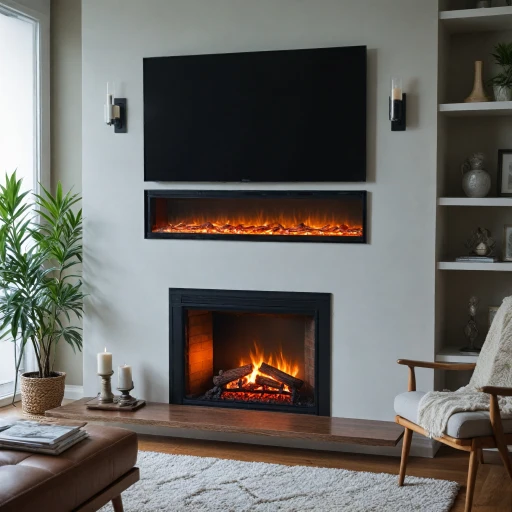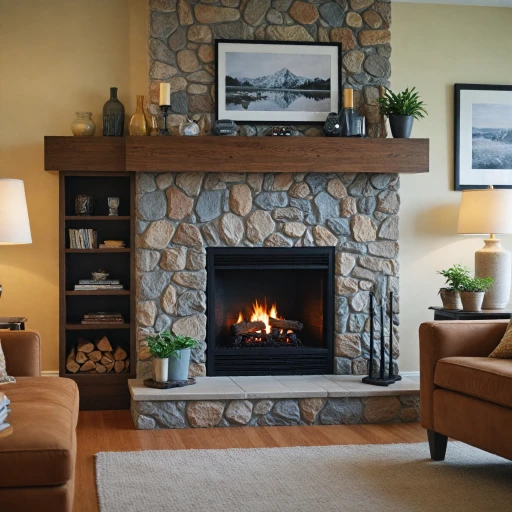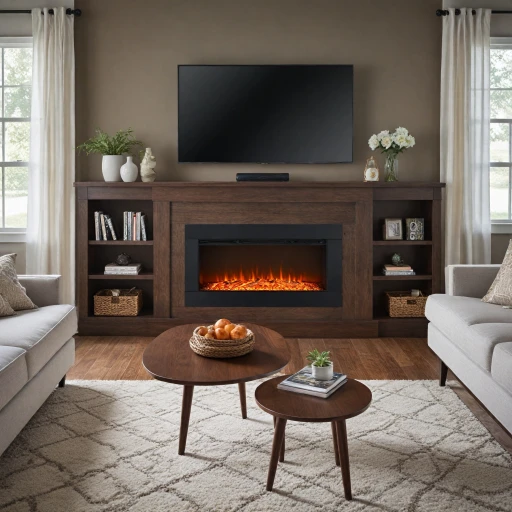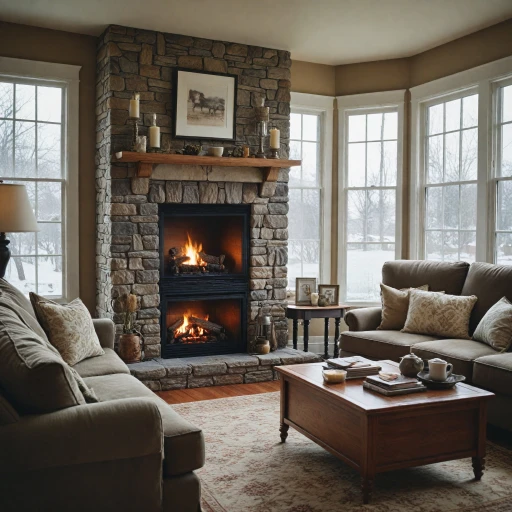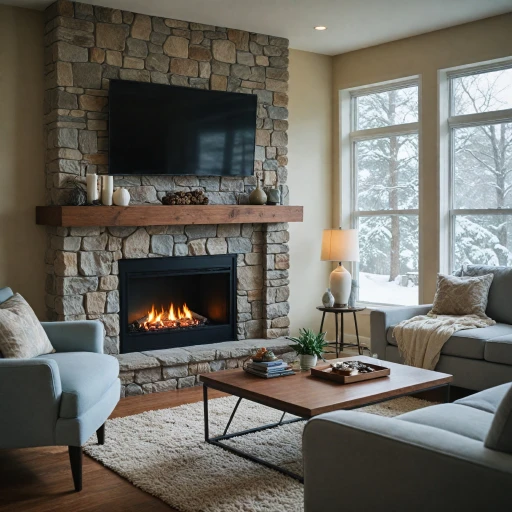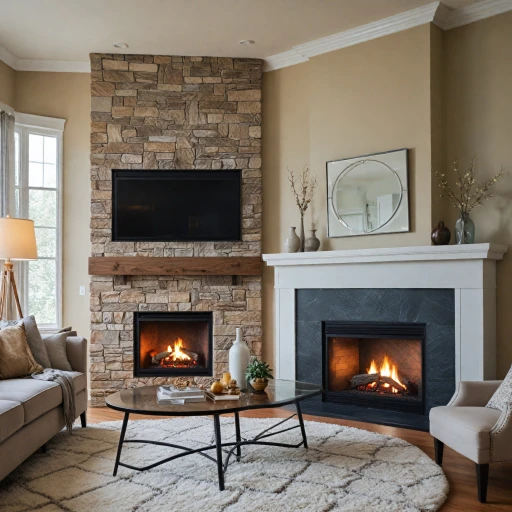
Comparing Gas and Electric Fireplaces
The Battle of Flames: Gas vs. Electric Fireplaces
Deciding between a gas and an electric fireplace can feel like a showdown between the traditional charm of a glowing flame and the modern convenience of plug-and-play warmth. It's about weighing the advantages, such as installation, cost, and the overall feel of warmth they provide.
Gas fireplaces, especially those that are vented, capture the essence of a classic wood-burning fireplace without the hassle of dealing with logs and ash. However, for their installation, you'll typically need a direct vent or a chimney, which means labor and venting costs can add up quickly. If you opt for a gas logs insert, you'll have the added expense of running gas lines if your home isn't already equipped—and sometimes, the labor costs can come as a bit of a jolt!
On the flip side, electric fireplaces stand as a beacon of simplicity. Plug them in, and you're ready to enjoy their heat without the fuss of a vent or a chimney. In the broad picture, the average cost of installing an electric model tends to be lower than that of a gas fireplace. This makes it a budget-friendly choice for those wanting to dodge hefty installation fees.
While gas fireplaces deliver a higher degree of authentic warmth, their installation complexities are not everyone's cup of tea. Electric fireplaces, though often met with skepticism about their heat output, are getting better at mimicking their more traditional counterparts. Many homeowners find their ease of installation worthwhile, and they can definitely help save energy in the long run.
Factors Affecting Gas Fireplace Installation Costs
Cost Drivers for Gas Fireplace Installation
When considering the installation of gas fireplaces, several factors significantly influence the final bill. Understanding these can equip you better as you plan for this cozy addition.- Fireplace Type: Are you keen on a traditional wood burning, gas logs, or perhaps a more modern fireplace insert? Each has different requirements and associated costs. Fireplace inserts generally require less labor but can still vary depending on whether it's a direct vent or vented unit.
- Ventilation Needs: Gas fireplaces predominantly come in vented (like direct vent) and unvented types. A vented gas fireplace will need additional structural work, like installing vents through walls or the chimney, adding to your total cost.
- Chimney Condition: If you're retrofitting a gas fireplace into an existing wood fireplace structure, the state of your chimney matters. Repairs or changes can quickly rack up costs, especially if you need updated inserts or construction work.
- Gas Line Installation: Another substantial expense will involve connecting to existing gas lines, which varies based on distance and home layout. It's a technical task that a professional must perform, adding labor costs to your tally.
- Labor Costs: The complexity of inserting a gas fireplace—be it creating space for a fireplace insert or handling gas line fittings—affects labor costs, which can vary widely by region or contractor.
Budgeting for a Gas Fireplace Installation
Planning Your Financial Outlay for a Fireplace Install
When you're figuring out how much to set aside for a fireplace installation, it's vital to consider several factors that can influence the costs. From choosing between gas and electric models to the type of venting and labor involved, your budget should accommodate various elements. Here’s a guide to help you manage the financial aspect of this cozy home addition.- Type of Fireplace: Your choice between a gas or electric fireplace will greatly impact your budget. Gas fireplaces typically require a connection to existing gas lines and more labor during installation, which can drive up costs. In contrast, opting for an electric model could be a more cost-effective solution as they don't need a vent or chimney, requiring less structural modification to your home. For more insights, explore the benefits of a net-zero electric fireplace.
- Installation Costs: Understanding various installation needs is crucial. Gas fireplaces can call for direct-vent systems or even vent-free setups, influencing labor costs. The average cost for installing a gas fireplace runs higher due to these additional requirements. Typically, labor and venting needs contribute significantly to this expense.
- Materials and Inserts: The use of gas fireplace inserts or electric logs can also alter expenses. For a gas option, fireplace inserts need to be compatible with either vented or vent-free options, affecting both the price of the unit and ongoing efficiency in terms of heat output.
- Existing Infrastructure: Leveraging existing infrastructure like a chimney or vent can cut back on costs. If your home already has a wood-burning fireplace, converting it using gas logs might save on installation fees. However, if significant alterations are needed, such as adding a new direct vent, prepare for increased expenses.
Electric Fireplace: A Cost-Effective Alternative?
Why Electric Fireplaces Might Be the Smarter Choice
When considering the costs associated with installing a gas fireplace, it's worth looking into alternatives that might save some bucks while still delivering the cozy warmth you're after. An electric fireplace could just fit the bill, offering a tasty combo of convenience, lower initial costs, and ease of installation.- Lower Initial Costs: Unlike gas fireplaces, electric models won't put a dent in your wallet when it comes to setup. You dodge expenses related to gas lines, chimney modifications, or costly venting systems. The average cost of an electric fireplace is often less than its gas or wood-burning counterparts, plus there's no need for expensive gas fireplace inserts.
- No Need for Vents: For those in apartments or homes without a chimney, the electric option could be a game-changer. There's no need for direct or vented systems, making it significantly easier and cheaper to install compared to vented gas logs or direct vent gas fireplaces.
- Ease and Flexibility: With no burning logs or chimney cleaning to worry about, electric fireplaces offer a no-fuss approach to heating your home. They're plug-and-play, which means less time arranging installation and more time enjoying the warmth they provide.
Installation Process: What to Expect
Installation Process Insights
When placing a gas fireplace in your home, understanding the installation process can ease concerns and help you prepare. Here's what to expect throughout each stage of getting your fireplace ready to enjoy:- Initial Assessment: A professional will assess your chosen location for the fireplace insert to ensure it meets safety regulations and has the necessary access to gas lines. They will discuss if a direct vent or vented gas option is preferable based on your structure.
- Choosing the Right Model: Together, you decide on a gas fireplace that's in line with your decor and needs. Will it mimic a traditional wood burning fireplace, or will you opt for more modern aesthetics? This choice might revolve around the efficiency of inserts and whether simulacra of wood logs appeal more than sleek, minimal vibes.
- Inspection of Current Structures: If you're upgrading from a wood fireplace, the existing chimney will be inspected to determine if it can accommodate a new insert without extensive modifications, saving time and cost.
- Vent and Gas Line Installation: Professional installers will then work on vent and direct vent systems to ensure safe dispersion of fumes. This step includes setting up the unvented gas or vented gas paths crucial for safe operation.
- Labor and Material Costs: Labor constitutes a significant portion of installation costs. Skilled labor ensures your fireplace's efficient and safe operation. The average cost for a standard install varies based on complexity and customization, which can influence the total cost install.
- Safety and Functionality Checks: Post-installation, checks are crucial. Experts will ensure that everything from the ignitor to the thermostat works flawlessly, and they'll offer guidance on maintaining your newfound heating solution.
Maximizing Efficiency and Savings
Boosting Efficiency and Cutting Costs
When it comes to fireplaces, maximizing efficiency is key to saving money and getting the most out of your investment. Whether you're considering a gas fireplace or an electric one, understanding how to optimize their use can lead to significant savings.
For gas fireplaces, the type of venting system plays a crucial role. A direct vent system is often more efficient than a vented gas system because it draws air from outside, reducing heat loss. This means more heat stays in your home, lowering your heating costs.
Another factor to consider is the fireplace insert. These inserts can transform an existing wood-burning fireplace into a more efficient gas or electric model. They are designed to fit snugly into the existing space, providing better heat output and reducing the amount of energy needed to maintain a comfortable temperature.
Smart Usage Tips
- Regular Maintenance: Keep your gas lines and logs in top condition to ensure optimal performance. Regular checks can prevent costly repairs down the line.
- Thermostat Control: Use a thermostat to maintain a consistent temperature. This prevents overheating and reduces unnecessary gas consumption.
- Zone Heating: Focus on heating the rooms you use most. This can be more cost-effective than heating your entire home.
For those leaning towards an electric fireplace, the installation process is generally simpler and less costly. These fireplaces are known for their energy efficiency, especially when compared to traditional wood-burning options. They can be a great alternative if you're looking to save on installation and operational costs.
In conclusion, whether you choose a gas or electric fireplace, understanding the nuances of each option can help you make a more informed decision. By focusing on efficiency and smart usage, you can enjoy the warmth and ambiance of a fireplace without breaking the bank.

